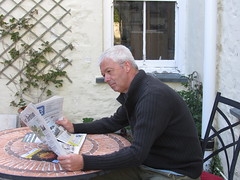If you are currently a devotee of Canon compact cameras, this may be "preaching to the choir." Even so, should you are shopping for an outstanding vacation camera, the Canon PowerShot SX230 HS might possibly be the ultimate fit for your pocket.
Since the SX230 is somewhat larger than the more compact models, perhaps "pocket camera" might be pushing somewhat towards larger pockets such as those in cargo pants, but this PowerShot camera would be a pretty neat fit for anyone with extra room in their pockets or a ladies handbag. Dimensions are actually 4.2x2.4x1.3 in. and it has a weight of merely 7.7 oz.
PowerShot SX230 HS Improvements

Canon PowerShot SX230 HS sample image from Cameralabs.com - click the photo to go to their photostream.
To begin with will be the basis for the latest identify. You might recall that previous models in this particular set of digital cameras had an "IS" at the end in the camera name. This was because of Image Stabilization included in the camera engineering. Currently, newly designed engineering has bestowed upon this camera an "HS" at the close of its identify. The engineers have improved the CMOS sensor at the same time as the DIGIC 4 image processor within the camera and added greater efficiency in the manner these two important parts of the camera communicate with one another to produce far better images and shot processing.
Using the HS process, the camera will manage pictures in a much more effective means in order to provide much better minimal light photos. The camera processes low light conditions in a different way than its predecessors, resulting in faster shutter speeds along with more light hitting the sensor, subsequently rendering superior, substantially less noisy pictures.
Yet another exciting element is the in-camera GPS program. This will enable you to take a picture from your excursion using your camera, which includes the exact spot every single image was snapped.
Yet one more enhancement comes in the form of video. The Canon PowerShot SX230 HS offers full HD video at 1080p and 30 fps. Furthermore, it has an item named "Dynamic IS" in video shooting. It is image stabilization whilst making digital movies.
Camera dials and buttons on the SX230 appear far more professional as the manufacturer has located the mode dial, function wheel, along with other controls buttons on the back of your camera.
With respect to control, this camera permits you, the photographer, to take matters directly into your own hands, only if you would like to. In case your wish would be to set the camera on Auto and stay totally free to compose and shoot, you are going to most likely be quite pleased with the results. That's just due to the "Smart Auto" stop on the setting dial. It really is straightforward - set it and forget it!
The Canon PowerShot SX230 HS provides all the necessary the elements of a great all-in-one camera. It's ideal as a general family camera or for vacations and excursions. It takes incredible still images and video too.
To see more about this digital camera click on http://digital-photographic-resources.com/.






